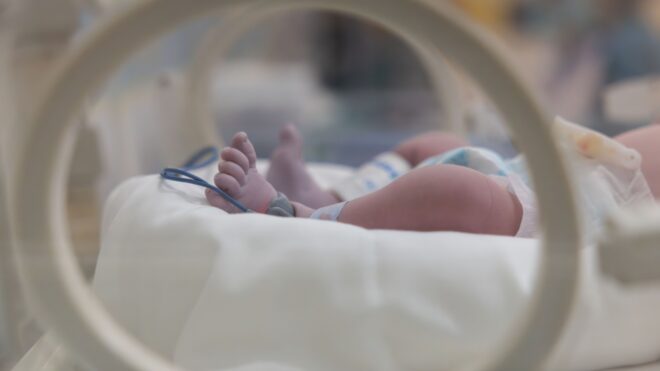While C-sections are meant to be done only when there's a major medical reason for skipping a vaginal delivery, up to 20 percent of babies born in the US are delivered by cesarean section these days. As a result, many moms — both those who knew they'd be going under the knife ahead of time, and those who had it happen unexpectedly — are left wondering how the involved surgical procedure will affect their baby.
It is true that babies delivered by C-section will have a different experience than those delivered vaginally. "Babies born by C-section are usually healthy," assures Siobhan Dolan, MD, MPH, medical advisor to March of Dimes, and author of Healthy Mom, Healthy Baby. "But they can have some side-effects."
Here, 7 things a C-section baby might have to deal with.
-
An increased chance of being a preemie. "Babies need at least 39 weeks in the womb to grow and develop before they’re born," explains Dr. Dolan. "If you have your C-section too early, your baby may be born too early, which cause health problems for your baby at birth and later in life."
-
A harder time breathing after birth. During a C-section, the baby doesn't squeeze the amniotic fluid out of his lungs as easily as he would coming through the birth canal, says Stephen Guy, MD, OB/GYN at Miami Valley Hospital in Dayton, Ohio. That's because labor contractions trigger an increased surge of catecholamines (produced by the body in response to stress), which prepare the baby’s lungs to breathe on their own at birth by absorbing the liquid in her lungs. Babies born by a scheduled cesarean have lower levels of catecholamines than babies born vaginally.
-
Colic, asthma, allergies, or even obesity. Being born vaginally exposes babies to their mother's vaginal bacteria — which is a good thing. Research suggests that these babies may be less prone to chronic ailments such as asthma, allergies, or obesity. And a recent study in the journal Pediatrics showed that infants with colic have more bacteria that produce gas, whereas anti-inflammatory bacteria that live in the vaginal canal are more common in colic-free infants.
-
Losing out on the benefits of immediate skin-to-skin contact with mom. The Listening to Mothers II survey revealed that only 14 percent of mothers who gave birth by cesarean had their baby in their arms immediately after birth compared to 43 percent of the moms who gave birth naturally. This might be because many hospitals are more likely to take a C-section-delivered baby to the nursery for observation and monitoring within the first hour of life.
-
Breastfeeding can be a bit tougher. "The anesthesia given to the mother can make a baby sluggish," explains Dr. Dolan. This is nothing to be concerned about, but it can be more difficult to breastfeed a sleepy infant. For that and other reasons (mom is recovering from major surgery), C-section babies are less likely to be breastfed right away, which can make it more difficult later.
-
A lower APGAR score. Don't worry, it's not the SATs! The APGAR test, which takes place 1 to 5 minutes after birth, assesses the baby’s color, heart rate, reflexes, muscle tone, and respiratory effort. Babies delivered via C-section are 50 percent more likely to have a lower score (often attributed to anesthesia, fetal distress, or lack of stimulation, which most babies get during vaginal delivery).
-
It's riskier for baby overall. While the C-section rate is going up, the infant death rate in the US is higher than that of most other industrialized nations, according to an analysis published online in The Lancet medical journal.
Did your baby have any side effects from a C-section birth?
Image via isafmedia/Flickr




